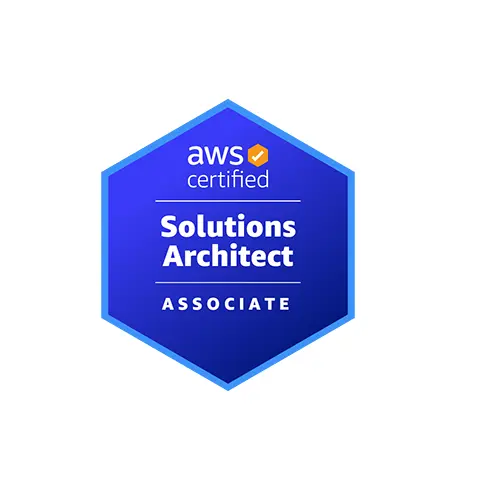How to Build Real‑World Projects During AWS Training
By Shweta | 28th July 2025

When it comes to mastering AWS, certifications alone are not enough. While exams test your theoretical knowledge, real-world projects test your practical skills. That’s where the true learning happens.
At Cloud Institution, we strongly believe in a hands-on, project-based learning approach that prepares students not just for certification—but for actual cloud roles in the job market. Building real-world projects during AWS training helps bridge the gap between textbook knowledge and production-ready skills.
In this guide, you’ll learn why real-world AWS projects matter, what types of projects to build, and how Cloud Institution helps you gain this experience step-by-step.
Why Are Real‑World Projects Important in AWS Training?
1. Practice > Theory
Learning AWS services like EC2, S3, Lambda, and CloudFormation from documentation is useful—but using them in actual projects solidifies that knowledge. You begin to understand how services connect and function in live environments.
2. Interview-Ready Experience
Real-world projects show recruiters you’re not just certified—you’re experienced. Projects act as a portfolio of your capabilities. During interviews, you’ll be asked, “Tell me about a project you worked on in AWS.” Having solid answers with real experience sets you apart.
3. Problem Solving Under Real Conditions
Only practical experience can teach you:
How to troubleshoot AWS CLI or SDK errors
How to optimize EC2 instance costs
How to deploy scalable apps using autoscaling and load balancers
These are the types of problems employers pay you to solve.
What Real-World Projects Should You Build?
Let’s break it down by skill level. Whether you’re a beginner or an intermediate learner, Cloud Institution designs its AWS training curriculum to gradually introduce real-world use cases.
Beginner Projects
These help you understand the basics of AWS services.
Create and Host a Static Website using S3
Learn to configure S3 buckets, set permissions, and host HTML/CSS files
Connect a domain with Route 53
Launch a Linux EC2 Instance
Learn to create, connect, and secure an EC2 instance
Install and run NGINX or Apache on the server
👉 Try this alongside our guide:
Linux EC2 Instance Creation
Deploy a Simple Serverless Application
Use API Gateway + Lambda + DynamoDB
Automate deployment using AWS SAM
These projects introduce you to networking, security groups, IAM roles, and the AWS console.
Intermediate Projects
AWS-certified professionals are needed in nearly every industry:
Finance
Once you’re comfortable with core services, tackle more complex architectures.
Build a 3-Tier Web Application Architecture
Front-end in S3 + CloudFront
Application server using EC2 Auto Scaling Group
Backend with Amazon RDS
Secure all with IAM, VPC, and Security Groups
CI/CD Pipeline with CodePipeline, CodeBuild, and GitHub
Automate application deployment from version control
Understand DevOps practices in AWS
Infrastructure as Code with Terraform
Automate resource provisioning
Great project to show IAC skills on your resume
Start here: Running your First Terraform Program on AWS
: Secure data handling and compliance
Healthcare: HIPAA-compliant infrastructure
Retail & E-commerce: Scalable, high-performance systems
EdTech and Online Services: Cloud-native application deployment
Cloud adoption isn’t slowing down—it’s accelerating. AWS certifications, especially at the professional level, make you more competitive in these rapidly growing sectors.
Advanced Projects (Job-Ready)
Real-Time Log Monitoring with AWS Kinesis and CloudWatch
Ingest and analyze logs from apps in real time
Data Lake Architecture using S3, Glue, Athena, and Redshift
Build an analytics-ready solution with serverless querying
Highly Available WordPress Website using RDS, EC2, and Auto Scaling
Deploy a fault-tolerant app with backup and recovery mechanisms
Secure VPC Design
Build isolated subnets, NAT gateways, NACLs
Integrate with on-premise networks via Site-to-Site VPN
Learn foundational VPC concepts first:
What Are the Key Components of a VPC (Virtual Private Cloud)?
How Cloud Institution Helps You Build These Projects
At Cloud Institution, we offer much more than theoretical AWS training. We integrate hands-on labs, capstone projects, and real-world cloud use cases throughout every AWS course.
Here’s how we guide your project-building journey:
1. Structured Hands-on Labs
Each service is introduced through a guided lab. You don’t just learn what S3 is—you build a project using it. Every topic has a corresponding practice lab.
Example:
EC2 Lab: Launch a web server, configure security groups, assign Elastic IPs.
IAM Lab: Create users, groups, roles, and apply least privilege policies.
Project Mentorship and Feedback
Our expert trainers not only guide you in building projects—they also review and provide feedback. You’ll learn best practices and understand what mistakes to avoid.
Portfolio Preparation for Interviews
Once your projects are complete, our mentors help you present them in your portfolio:
How to document your architecture
How to explain your project in interviews
How to showcase it on LinkedIn/GitHub
Bonus: Project Topics Based on Latest Cloud Trends
Cloud Institution keeps its curriculum aligned with evolving trends. That’s why we also introduce emerging cloud topics like:
Containers with ECS and EKS
Cloud Cost Optimization
Multi-Cloud Architectures
This helps you stay ahead of the curve and stand out in job interviews.
Final Thoughts
If you’re learning AWS just by watching videos or reading documentation—you’re only halfway there. Hands-on projects are where the real learning begins.
At Cloud Institution, we empower learners to build projects from Day 1—so by the time you’re certified, you’re also ready for real-world AWS roles.
You’ll understand how AWS services work in practice
You’ll build a cloud-ready portfolio
You’ll be able to answer interview questions with confidence
So, don’t just study AWS—build with it. That’s the Cloud Institution way.
